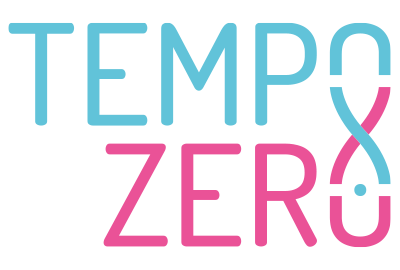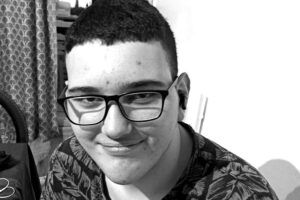
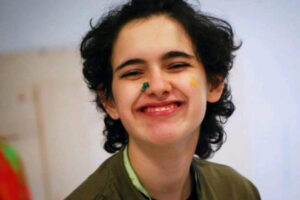
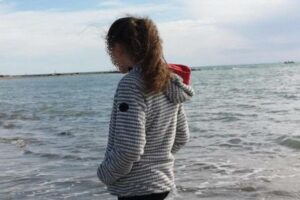
WHEN I GROW UP I WILL BE…

My name is Romina, and I am Giorgio’s mother. Giorgio is a 15-and-a-half-year-old boy.
At the age of 11 and a half, he had his first tonic-clonic seizure, something he had never experienced before. We later discovered from the neurologist that Giorgio had been making a slight eye movement since he was a child, rolling his eyes back for a microsecond, which I had mistaken for tiredness but were actually absence seizures. Thus, it seemed logical—absences in childhood and epileptic seizures in adolescence, diagnosed as adolescent epilepsy. With medical therapy, he had two seizures in the following three months and then, fortunately, none for two years.
In the summer of 2022, he had another seizure. The Depakin dosage was low, so we thought that was the problem and increased the medication. In late October 2022, while on vacation and taking his medications at irregular times, Giorgio had another seizure. We thought the irregular schedule was the cause and adopted a stricter schedule.
On December 26, he had his longest seizure, starting as a partial seizure and evolving into a tonic-clonic one. In February 2023, after yet another seizure, the neurologist decided to conduct genetic tests, which were performed on July 31, 2023.
In the meantime, I noticed that Giorgio’s hands started trembling quite a lot from December 2022 onward. His performance at school dropped significantly. Already struggling with dyspraxia and dysgraphia, he now faced very low grades, which slightly affected his self-esteem. During the summer of 2023, as we spent all day together, I observed that he often closed his eyes and his head drooped a little.
“Something is wrong!” I told myself. As his mother, I felt it. We were on vacation in Italy. We have been living in France for five years. So, I took him to see my father-in-law’s family doctor for six consecutive days. The doctor was happy to see him, examined him, measured his blood sugar and blood pressure, and suggested that perhaps the medication dosage was too high but couldn’t provide more insight without further investigation.
THE DIAGNOSIS OF LAFORA
We returned to France, and Giorgio finally underwent the tests at the end of July. At the end of September, we received the results. That’s when the nightmare began. “DIAGNOSIS OF LAFORA.” How could this be? Why? It wasn’t fair.
After days of total despair, hard to describe, I considered our options. We were supposed to be followed in Lyon, but all they said was, “Your son has this condition. See a psychologist. We’ll see you in a year.”
A year? I had read horrifying things and had to wait a year? He could be in a wheelchair in a year. Or unable to speak. Or unable to eat. Or dead. Unbelievable.
THE BELLARIA INSTITUTE IN BOLOGNA
I did some research and contacted the Bellaria Institute in Bologna. I didn’t care about the cost; if my son needed a chance, he would get it. Dr. Muccioli called me 20 minutes after I contacted the neurology department. He suggested a hospital admission for tests, and on November 13, Giorgio, his brother, my husband, and I left for Bologna.
They conducted all the necessary tests. They informed us about the ongoing experimental treatment, hoping it would work.
We returned home with a shred of hope and the urge to fight against this cruel reality. We have a follow-up appointment at Bellaria in June.
For now, Giorgio is doing okay. He trembles a lot, and his eyes close with his head falling forward, but he still walks, eats, talks, laughs, plays on his phone, and manages his hygiene.
However, I notice the small deteriorations. He loved Legos passionately and still does, but he can no longer build them. He can’t write quickly on the PC (he uses it at school because of his dysgraphia) or even on the phone. He uses voice messages to communicate but struggles even with that. Sometimes, he can’t find the right words and takes a long time to say a sentence.
At school, he has support and is no longer graded. He continues to attend, but it’s like he’s not really there. Still, it’s good for him. He can still take the school bus home when I’m working. We try to maintain as normal a life as possible. I will work as long as I can and then adapt to my son’s needs without regrets.
Right now, he’s doing an internship at a supermarket, and seeing him come home tired but happy from “working” is priceless. The staff are aware of his condition and assign him simple tasks, supervising him and ensuring he doesn’t handle glass or dangerous items.
A HOPE FOR ALL LAFORA PATIENTS
I hope for Giorgio and all the young people with Lafora that this year will be a turning point. May they still dream of a life full of possibilities, like my son, who still says, “When I grow up, I will do this, and this, and also this.”
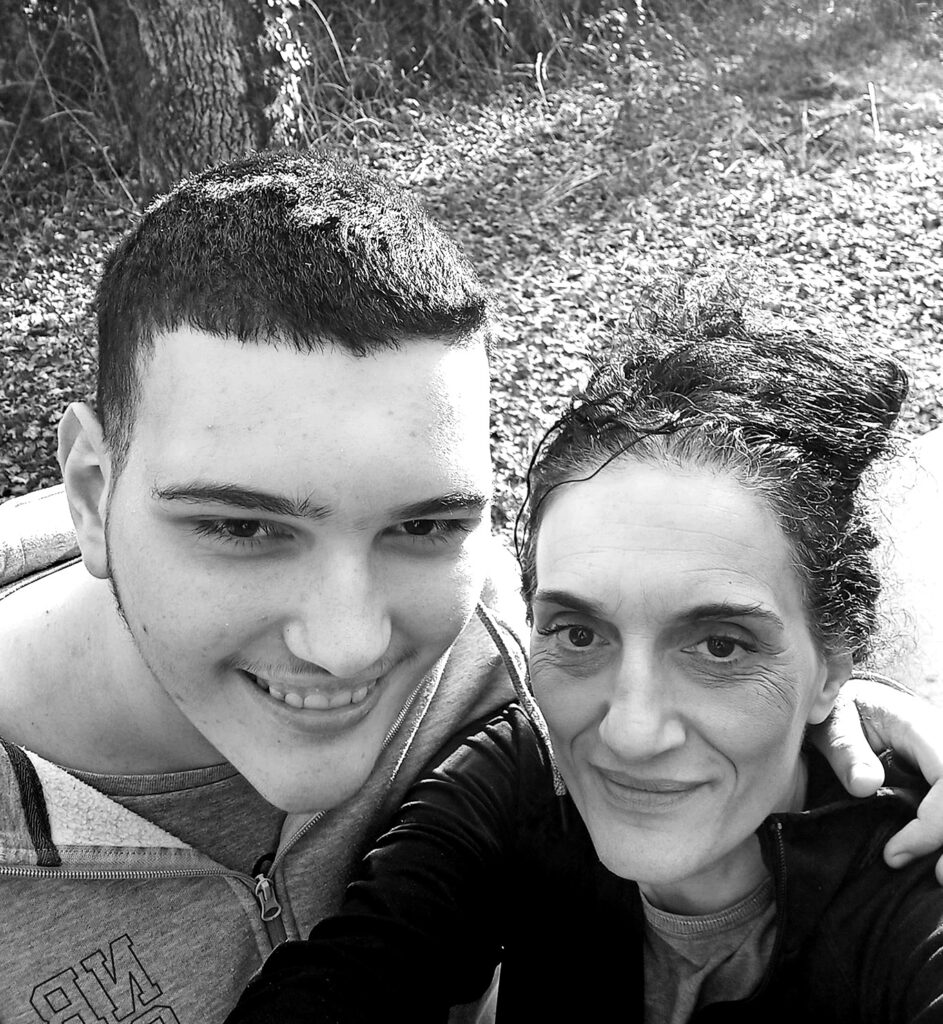
Our thoughts go out to Giorgio’s mother, Romina, who shared this story with us. A mother never gives up, never stops fighting to secure a future for her child.
Her efforts to support research for a cure for the surviving children are a valuable contribution to TempoZero.
Thank you, Romina.
SUPPORT RESEARCH
We need your help to raise funds for the development of a phase 1/2 (safety and efficacy) ASO drug specifically designed for Lafora disease.

